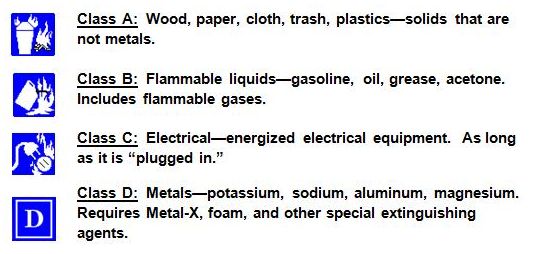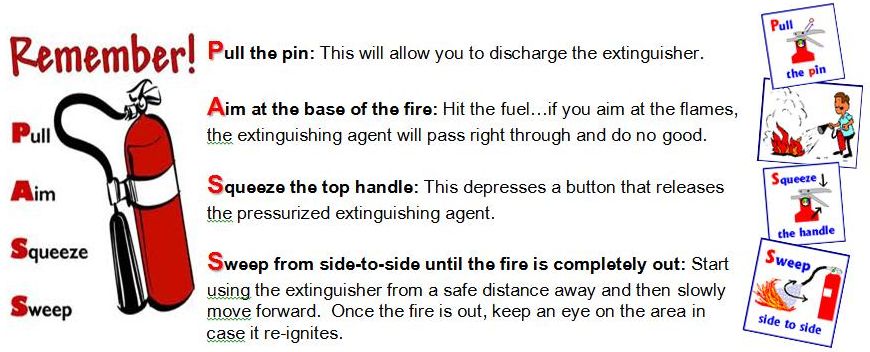In the event of fire, it is the first duty of all concerned to prevent injury or loss of life. Be sure you are familiar with all means of safety & escape in case of fire.
CLASSIFICATION OF FIRES
Fires are classified according to the type of fuel that is burning. If you use the wrong type of extinguisher on the wrong class of fire, you might make matters worse. It is very important to understand the four different fire (fuel) classifications:

Fire extinguishers provided in Homestay Hanoi
Carbon Dioxide (CO2): In red color cylinders & found in all rooms, CO2’s are designed for Class B and C (flammable liquids and electrical sources) fires only. In accordance with NFPA regulations (and manufacturers’ recommendations) all CO2 extinguishers undergo hydrostatic testing and recharge every five years. Carbon dioxide is a non-flammable gas that takes away the oxygen element of the at the base of the fire. CO2 may not be very effective in extinguishing a Class A fire. Class A materials may also smolder and re-ignite.
Foam fire extinguishers - 3 cylinders available on groundfloor - work like a blanket of foam covering a burning flammable liquid, cutting off the fire’s air supply and preventing the release of flammable vapours.
Water hoses on all floors are used for in Class A fires.
HOW TO USE FIRE EXTINGUISHERS
 :
:
Do not fight the fire if ...
... you don’t have adequate or appropriate equipment. If you don’t have the correct type or large enough extinguisher, it is best not to try fighting the fire.
... you might inhale toxic smoke. When synthetic materials such as the nylon in carpeting or foam padding in a sofa burn, they can produce hydrogen cyanide, acrolein, and ammonia in addition to carbon monoxide. These gases can be fatal in very small amounts.
... you instincts tell you not to. If you are uncomfortable with the situation for any reason, just let the fire department do their job.
Do position yourself with an exit or means of escape at your back before you attempt to use an extinguisher to put out a fire.
In case the extinguisher malfunctions, or something unexpected happens, you need to be able to get out quickly. You don’t want to become trapped.
As you evacuate a building, close doors and windows behind you as you leave. This will help to slow the spread of smoke and fire